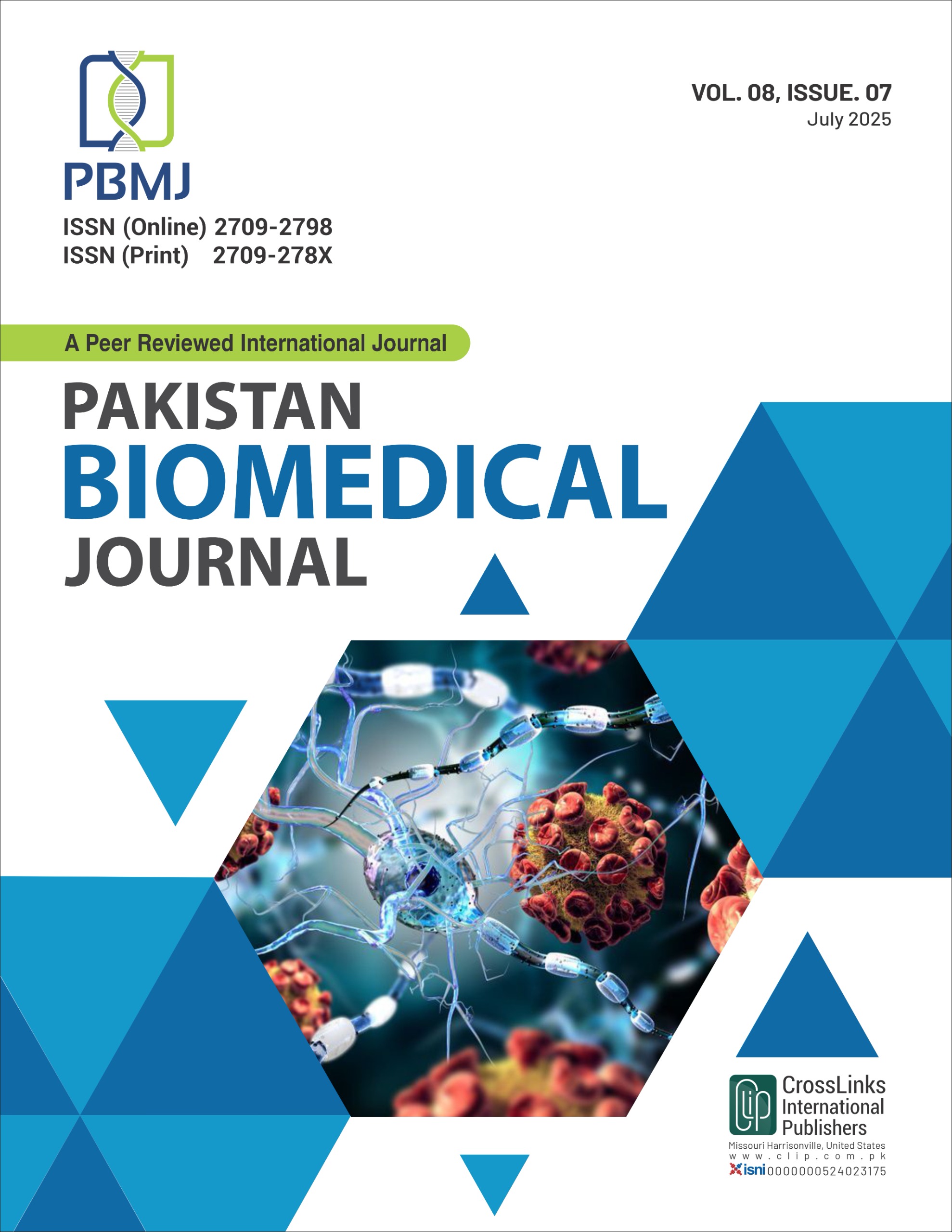Stillbirths: The Neglected Epidemic of Silent Loss
The Neglected Epidemic of Silent Loss
DOI:
https://doi.org/10.54393/pbmj.v8i7.1275Abstract
Each year, an estimated 2.6 million third-trimester stillbirths occur globally, 98% in low- and middle-income countries, yet this profound loss remains absent from major global health priorities. Stillbirths are not included in the Global Burden of Disease, disability-adjusted life years, or most international development goals [1]. In public health discourse, they are largely invisible. For affected families, the consequences extend beyond grief. In many regions, the loss of a stillborn child is compounded by social stigma, blame, and isolation. Rituals of mourning are often denied. Babies are not named or held, and their deaths are attributed to fate, sin, or spiritual causes. This erasure leaves women unsupported and silenced [2].
Despite perceptions of inevitability, many stillbirths are preventable. Over 1 million intrapartum stillbirths occur annually, often in settings where basic emergency obstetric care, infection screening, and nutrition programs could save lives. Evidence supports the impact of periconceptional folic acid supplementation, malaria prevention, syphilis treatment, and improved antenatal monitoring. In 68 priority countries, broad implementation of these interventions could reduce stillbirths by up to 45% [3]. However, progress is slow. Stillbirth reduction is not consistently included in national health strategies, and data remain scarce. In many countries, less than 5% of stillbirths are officially registered [4]. Without consistent classification and recording, intervention efforts are poorly targeted and their impact under measured.
Every Newborn Action Plan targets 12 or fewer stillbirths per 1,000 births by 2030, but at least 56 countries will need to more than double their current rate of progress. Achieving this goal requires political will, investment, and integration of stillbirth prevention into broader maternal and neonatal care frameworks [5].
We must insist on recognition, registration, and research. Governments must be held accountable for counting and reporting stillbirths. Interventions must be expanded, and community beliefs must be addressed with empathy and evidence. Every stillbirth is a human tragedy—and a signal of systemic failure. More than 7,000 families each day experience the reality of stillbirth. These losses must no longer be met with silence. Acknowledging the scale and causes of stillbirth is the first step toward prevention, justice, and healing.
References
Hathi PJ. The Causes and Consequences of Stillbirth’s Neglect in the Global Measurement of Fertility and Mortality (Doctoral dissertation, University of California, Berkeley). 2025.
Agena AG. Trends and Determinants of Intrapartum Stillbirth in the Public Health Facilities of Addis Ababa, Ethiopia. University of South Africa (South Africa). 2018.
Bhutta ZA, Darmstadt GL, Haws RA, Yakoob MY, Lawn JE. Delivering Interventions to Reduce the Global Burden of Stillbirths: Improving Service Supply and Community Demand. BioMed Central Pregnancy and Childbirth. 2009 May; 9(Suppl 1): S7. doi: 10.1186/1471-2393-9-S1-S7. DOI: https://doi.org/10.1186/1471-2393-9-S1-S7
Hug L, You D, Blencowe H, Mishra A, Wang Z, Fix MJ et al. Global, Regional, and National Estimates and Trends in Stillbirths from 2000 to 2019: A Systematic Assessment. The Lancet. 2021 Aug; 398(10302): 772-85. doi: 10.1016/S0140-6736(21)01112-0. DOI: https://doi.org/10.1016/S0140-6736(21)01112-0
Lawn JE, Blencowe H, Waiswa P, Amouzou A, Mathers C, Hogan D et al. Stillbirths: Rates, Risk Factors and Potential for Progress Towards 2030. Lancet. 2016; 387(10018): 587-603. doi: 10.1016/S0140-6736(15)00837-5. DOI: https://doi.org/10.1016/S0140-6736(15)00837-5
Downloads
Published
How to Cite
Issue
Section
License
Copyright (c) 2025 Pakistan BioMedical Journal

This work is licensed under a Creative Commons Attribution 4.0 International License.
This is an open-access journal and all the published articles / items are distributed under the terms of the Creative Commons Attribution License, which permits unrestricted use, distribution, and reproduction in any medium, provided the original author and source are credited. For comments editor@pakistanbmj.com











